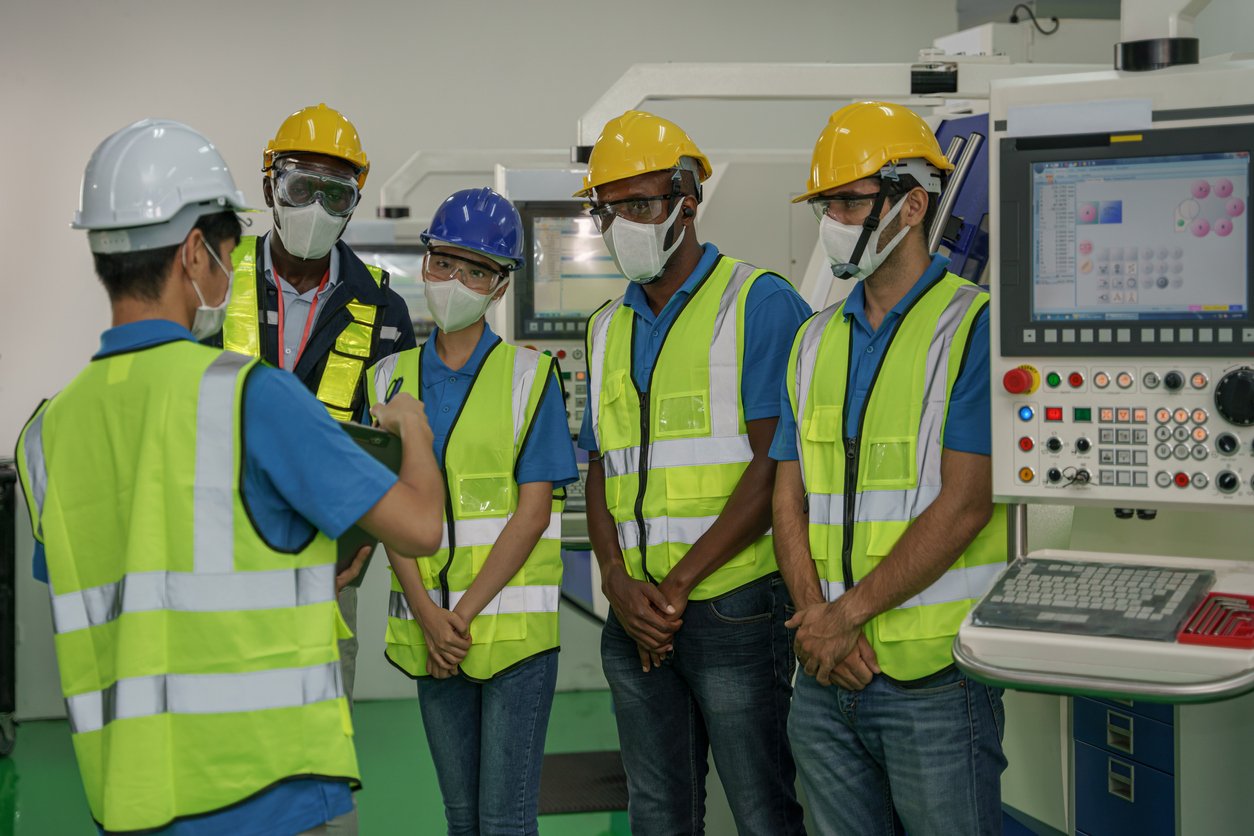Updated December 2025
The goal of health and safety officer training is to produce graduates who know how to keep people safe in the workplace.
Occupational health and safety officers are responsible for inspecting work sites and making sure regulations are followed. They help develop health and safety procedures, deliver training, and follow up on claims and complaints.
A good training program will prepare you to handle all of those challenges.
But what can you expect in class? What will you actually learn?
In this post, we detail the top five core skills covered in a quality health and safety officer training program.
1. UNDERSTANDING HEALTH AND SAFETY LEGISLATION
Obviously, you can't enforce the rules and regulations that govern workplace safety unless you know what they are.
A health and safety course will teach you about OHS laws, environmental regulations, worker rights, and employer responsibilities.
For instance, you'll learn about the proper labelling of hazardous products under the Workplace Hazardous Materials Information System (WHMIS).
You'll also learn about the role of provincial Workers Compensation Boards as well as the Board of Canadian Registered Safety Professionals.
Having a firm grasp of the relevant legislation is the basis for any career in OHS.
2. RECOGNIZING POTENTIAL HAZARDS
A major part of health and safety officer training focuses on teaching you to identify anything that could cause harm to people or property at work. That includes chemicals, heavy machinery, sharp edges, poor lighting, slippery floors, and much more.
You need to know what to look for. Could loose clothing get caught in a conveyor, for instance? Could someone get injured from lifting heavy boxes? Is a piece of equipment blocking access to a stairway or emergency exit?
By the end of the program, you'll have a keen eye for dangers related to tools, equipment, hazardous substances, and the building environment.
3. PERFORMING INSPECTIONS
Knowing the safety regulations and being alert to hazards is just the beginning.
Health and safety officer training also teaches you how to conduct formal workplace inspections. You'll learn how to walk through a space and take note of any areas of concern.
Each issue you find should be ranked by the danger it presents. For instance, improperly stored flammable materials have the potential to explode and must be dealt with immediately. But a dirty sink at the hand-washing station isn't quite so pressing.
A quality H&S program will give you specific strategies for conducting a safety audit, analyzing the results, and creating a plan to address any problems.
4. PROVIDING HEALTH AND SAFETY TRAINING
As an H&S officer, you need to make sure workers understand how to do their jobs safely. To do that, you need to provide training.
A health and safety course will show you how to plan and deliver safety orientations for workers and managers. You'll learn how to create training materials that have a real impact. And you'll learn how to measure the effectiveness of the training you provide.
By the time you graduate, you'll be fully prepared to guide employees through proper workplace health and safety processes and procedures.
5. COMMUNICATING WITH WORKERS AND MANAGEMENT
One of the most important skills for any health and safety officer is the ability to communicate well with people at all levels of an organization. That's why a good OHS program emphasizes effective writing and speaking skills.
You must be able to connect with the people who are doing the work so you can find out how things are done and what needs to be improved.
You also need to get both employees and management to accept your suggested changes. That means you must be both clear and persuasive.
EXPLORE HEALTH AND SAFETY OFFICER TRAINING AT HERZING College
Ready to learn more about OHS training?
Explore the 12-month Occupational Health and Safety training from Herzing College. Training is delivered online, and all students complete an eight-week internship.
Herzing's program is fully approved by the Board of Canadian Registered Safety Professionals (BCRSP). That means our graduates are immediately eligible to become Canadian Registered Safety Technicians (CRSTs).
The CRST certification is highly respected by employers all over the country and can help you land your first job as a health and safety officer.
Wondering if our OHS training is right for you? Speak to admissions. An advisor can guide you through class schedules, costs, admission requirements, and financial aid options.
Click below to get more details or chat live with an advisor. We're here to help!







